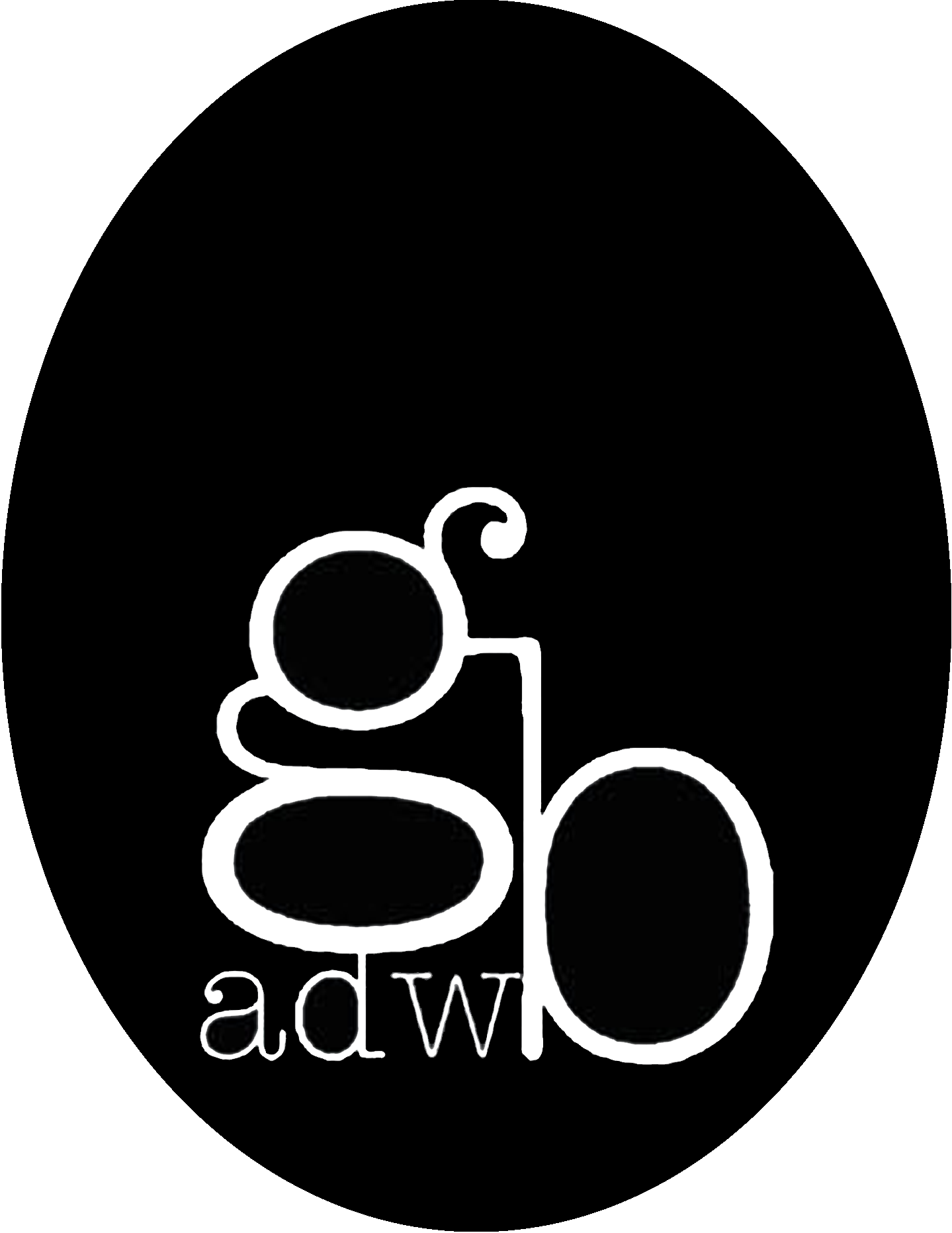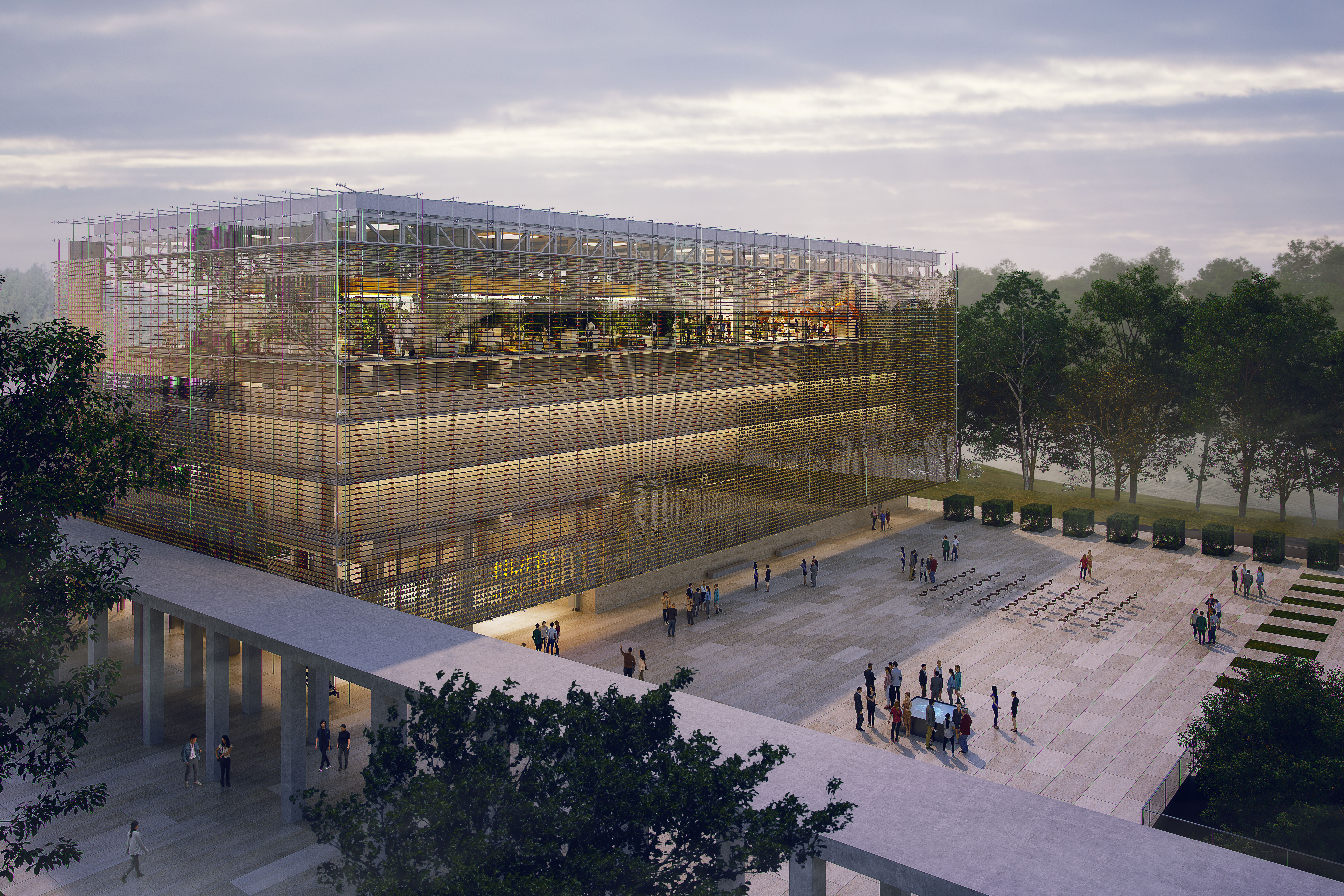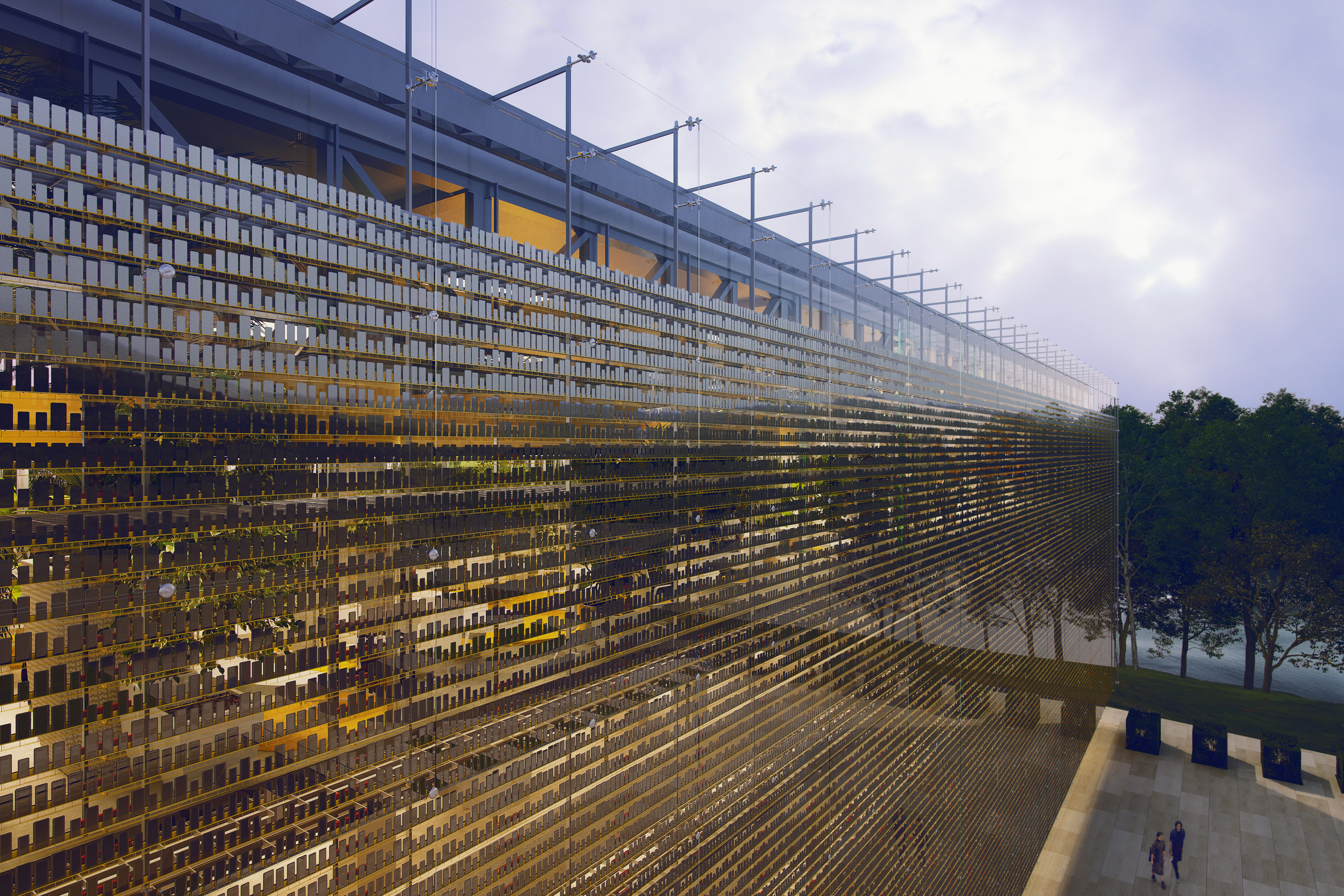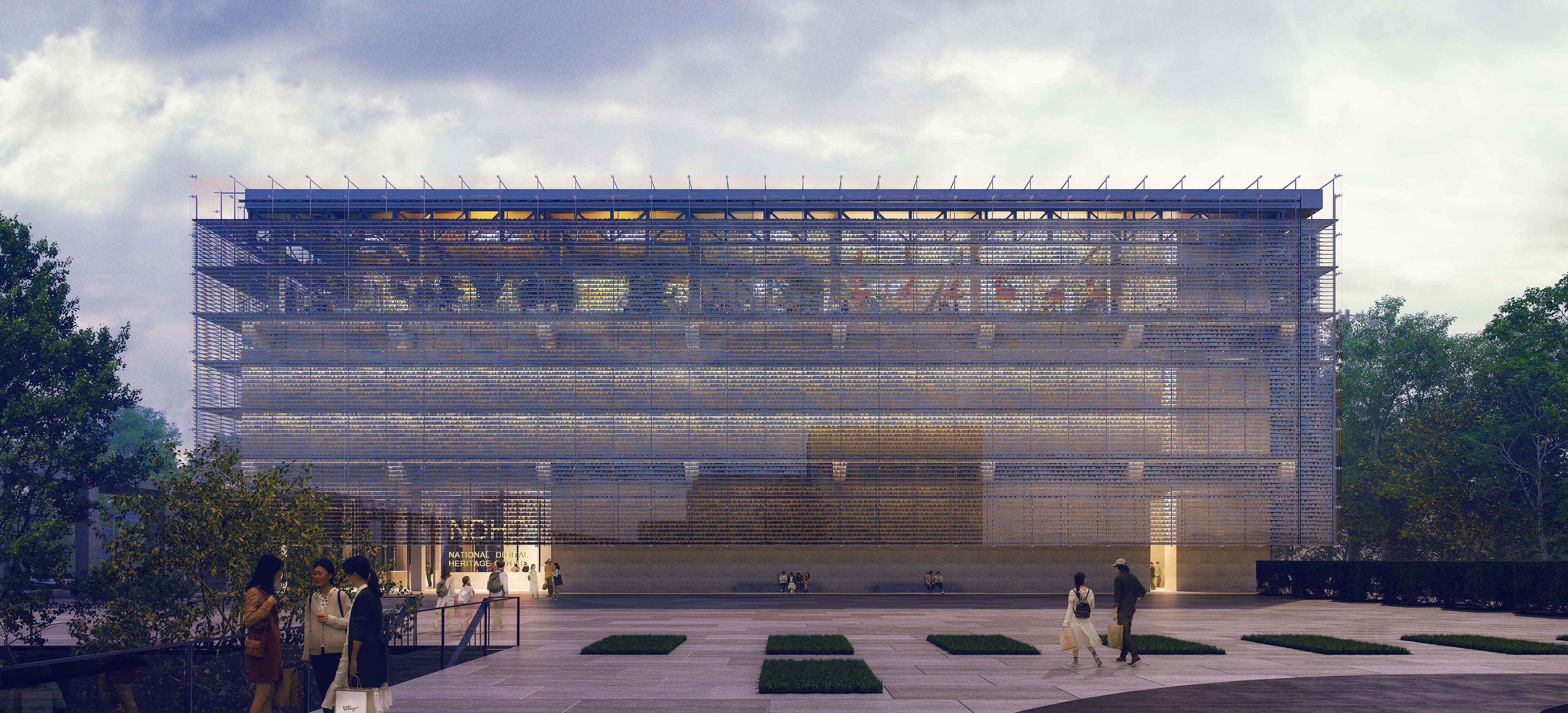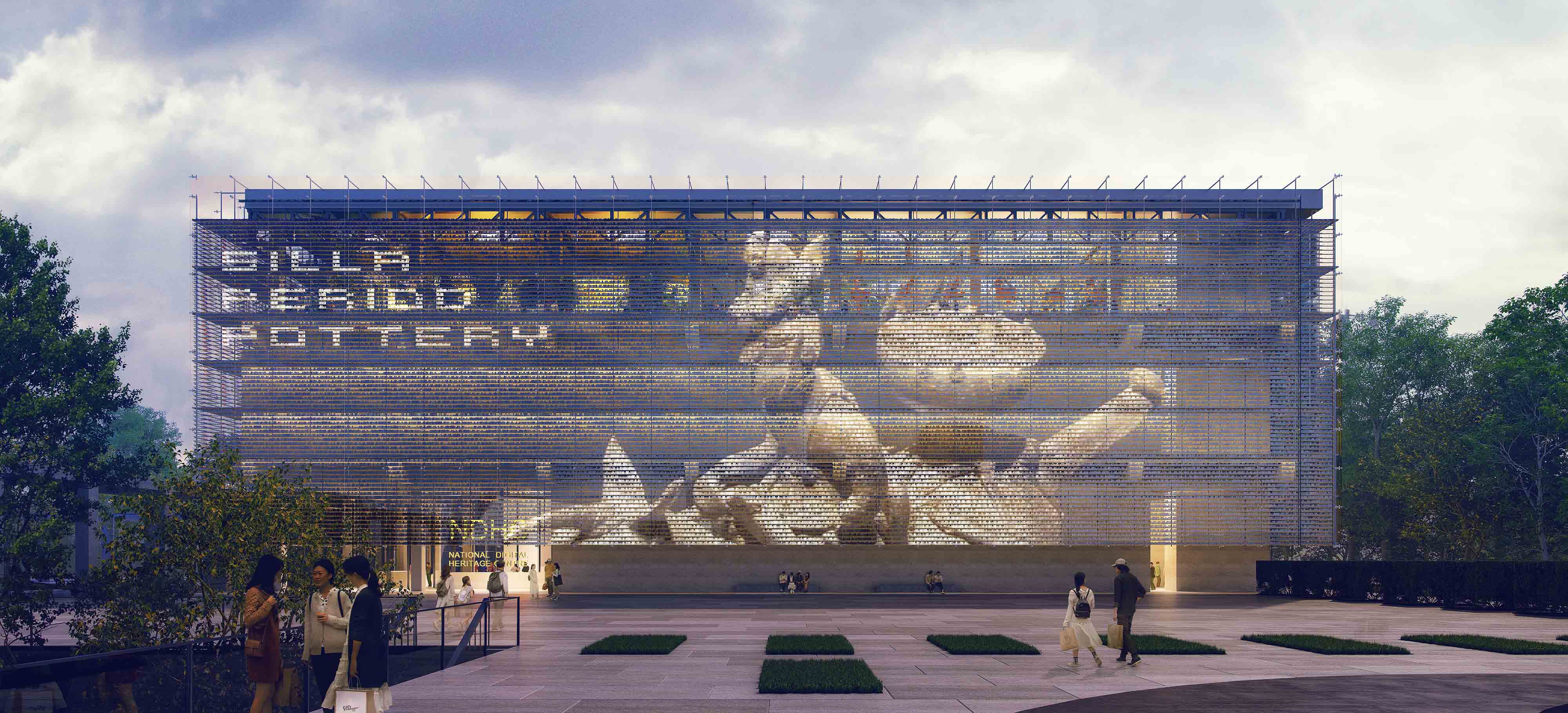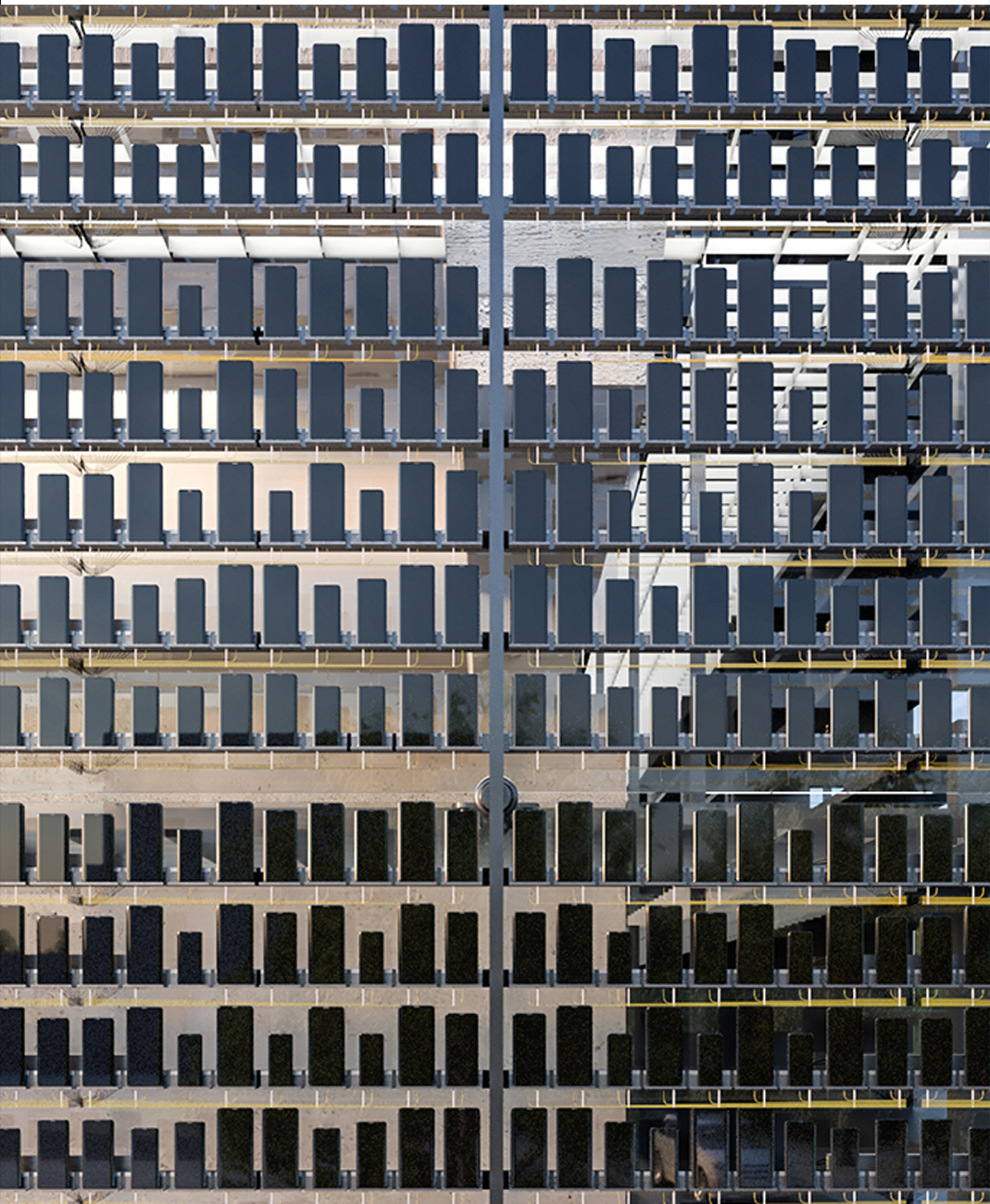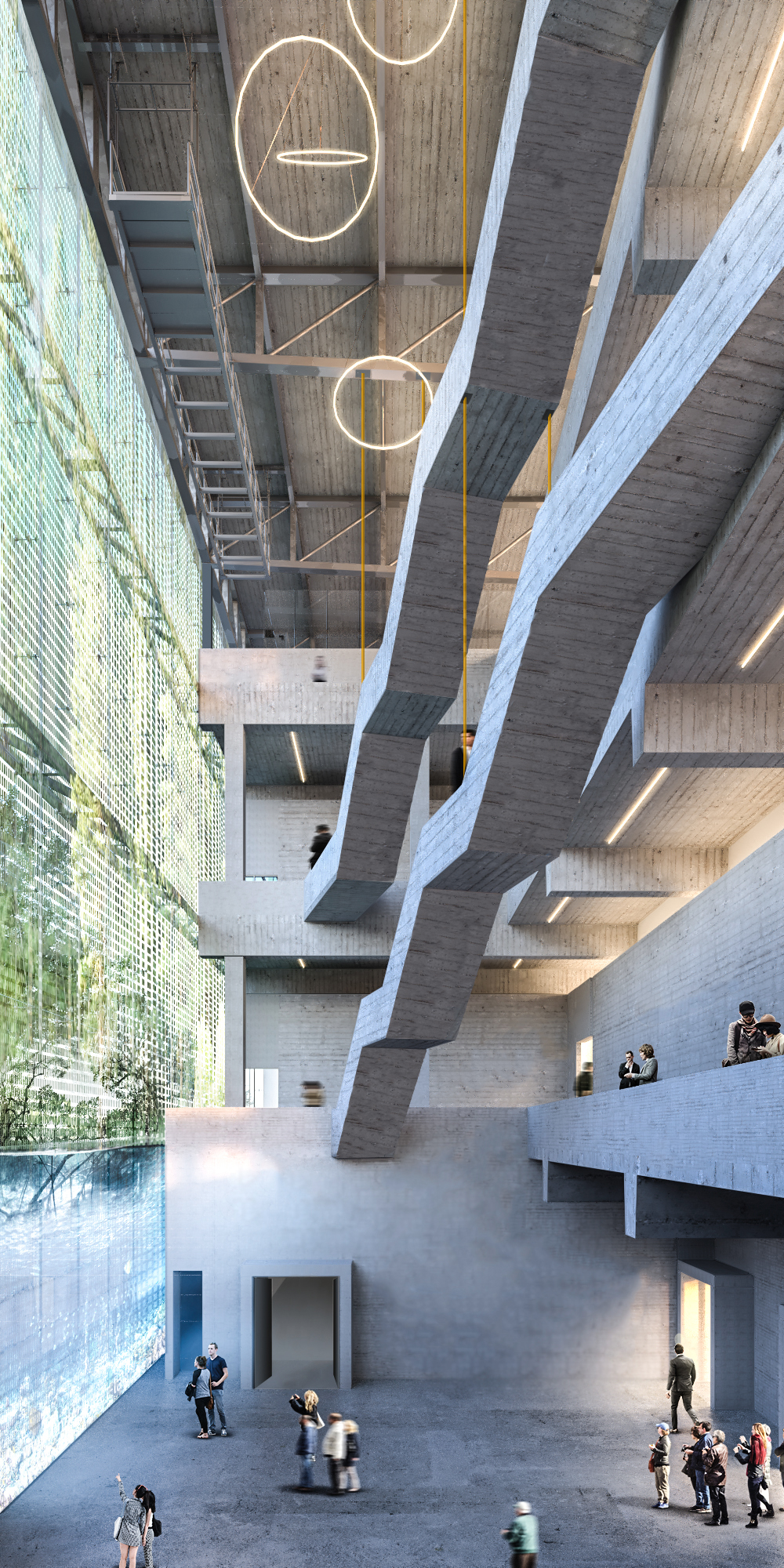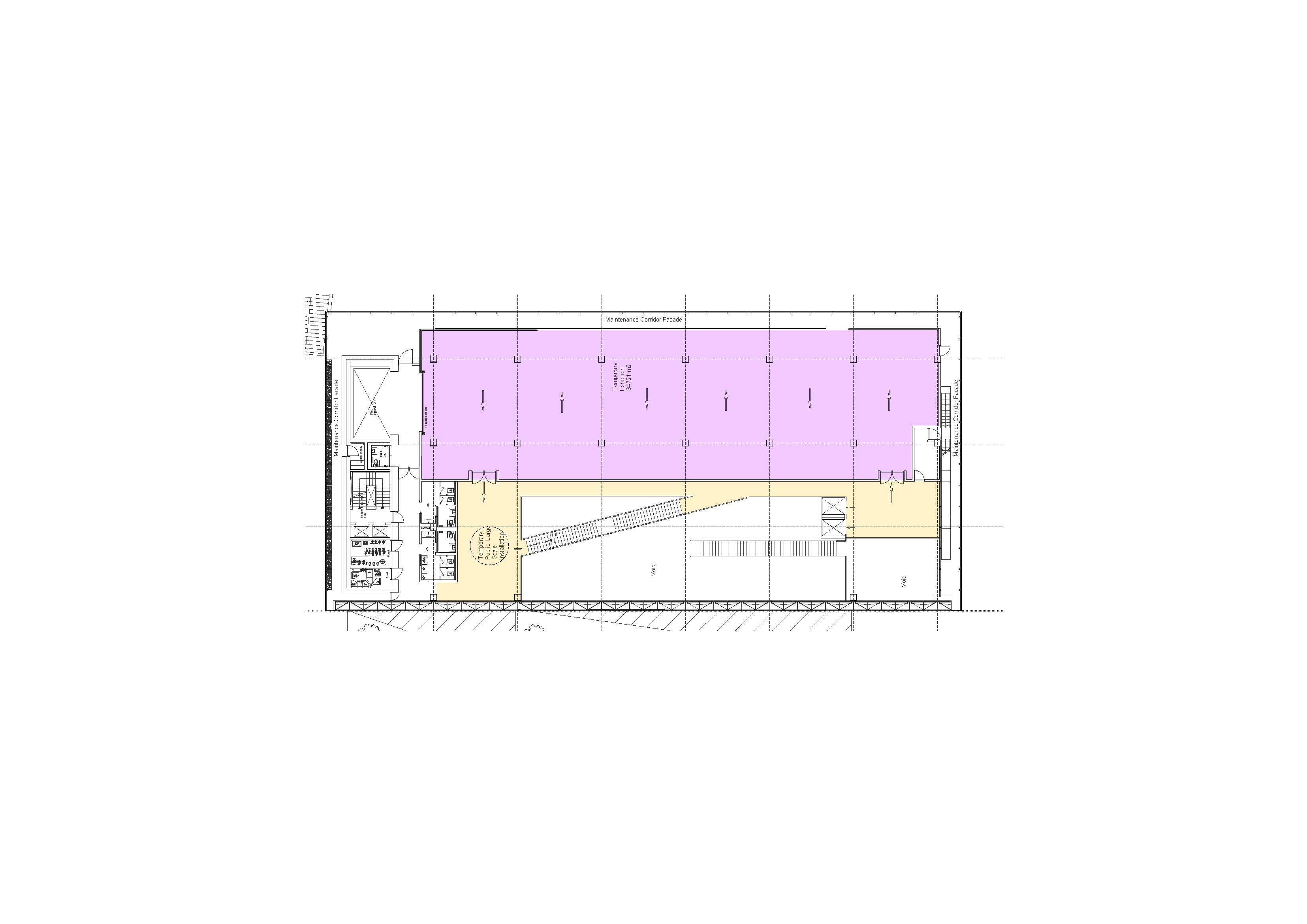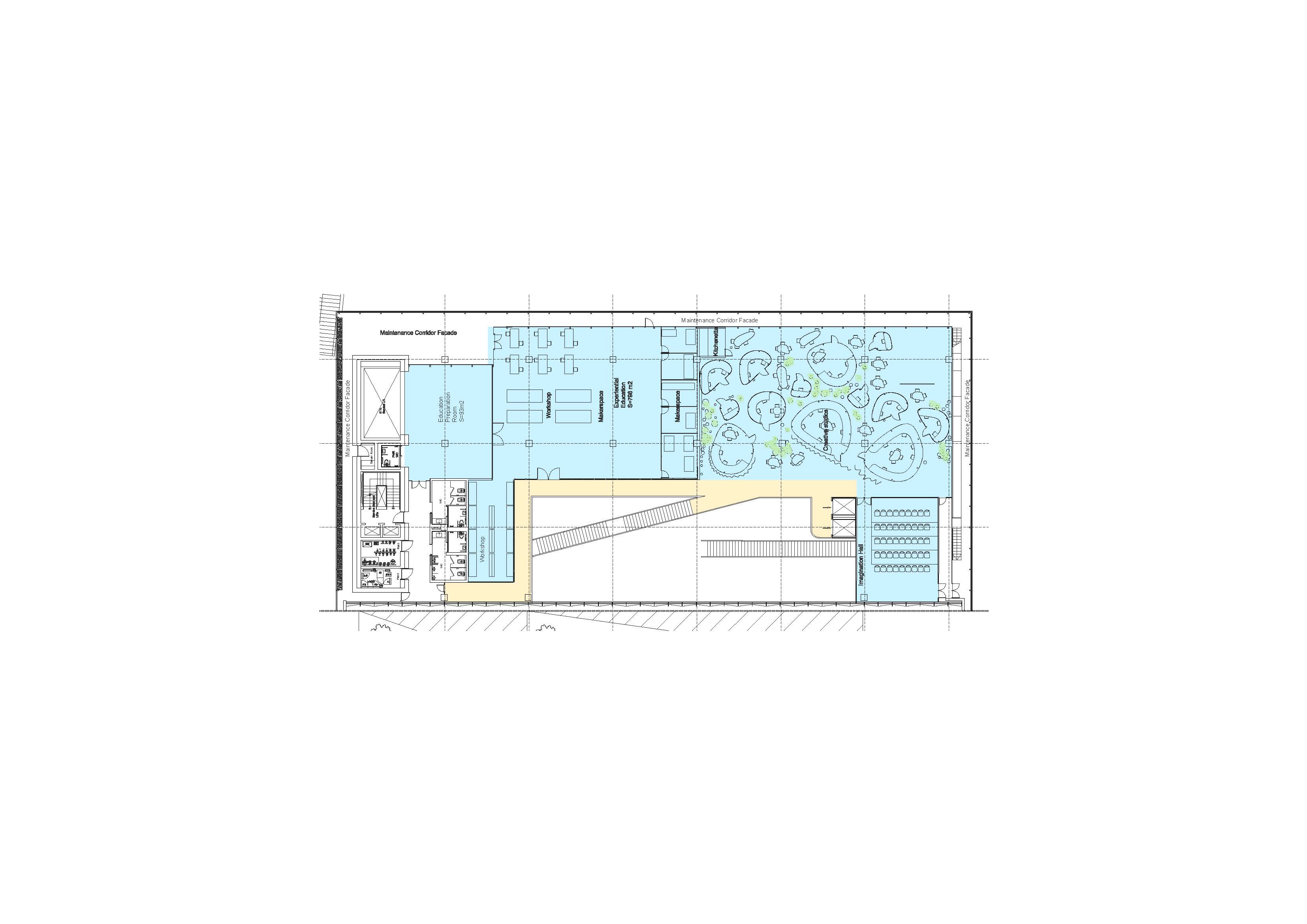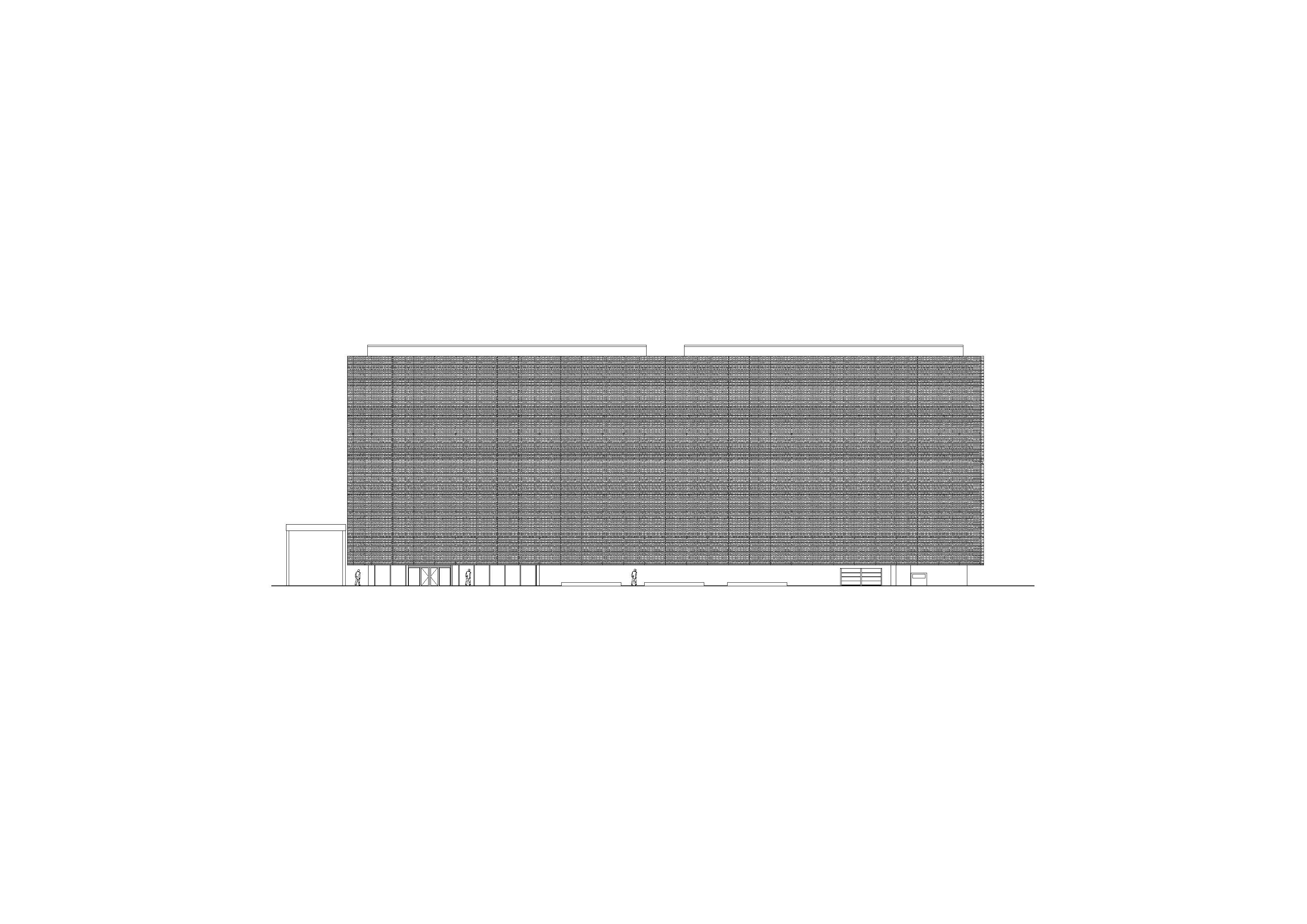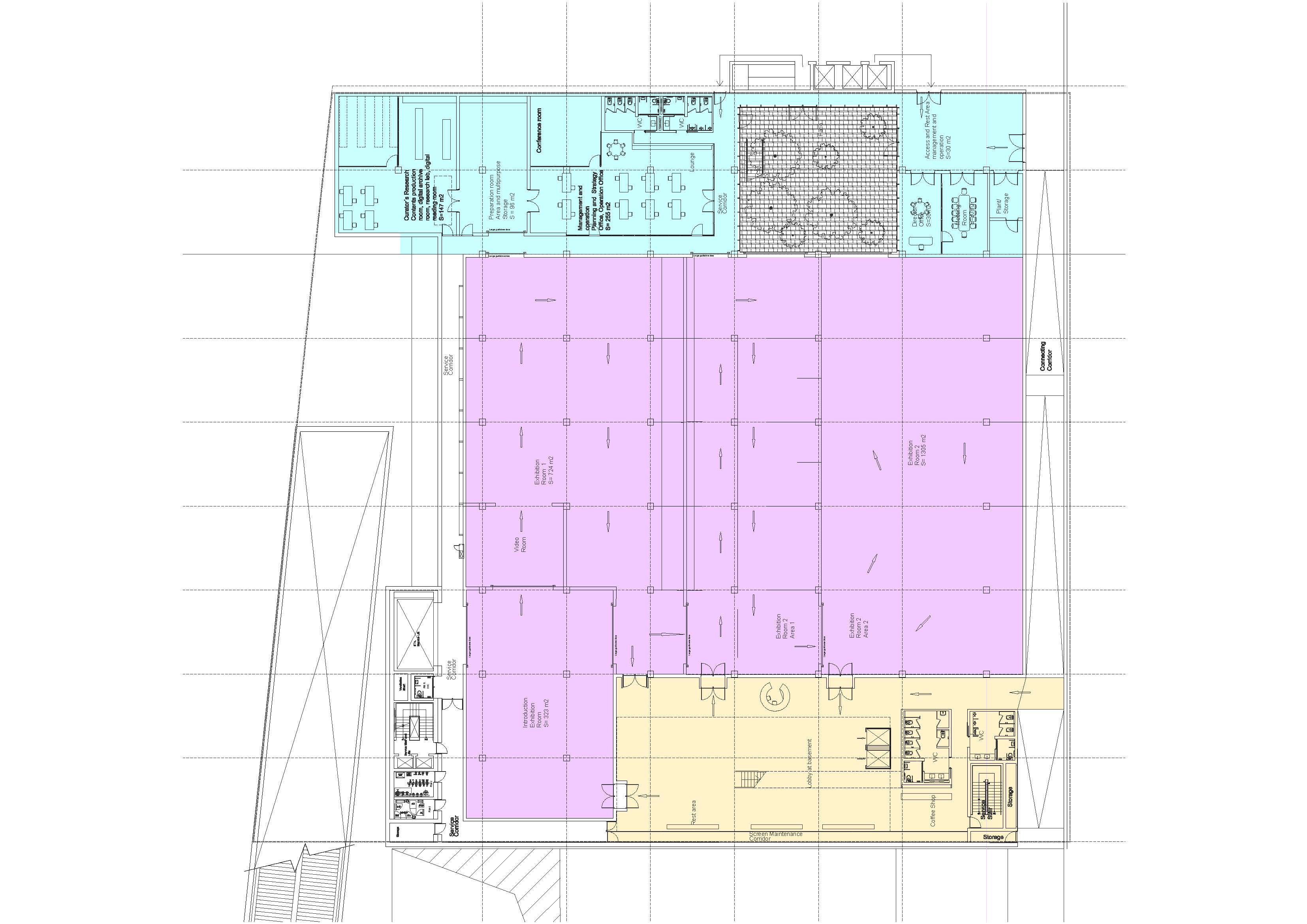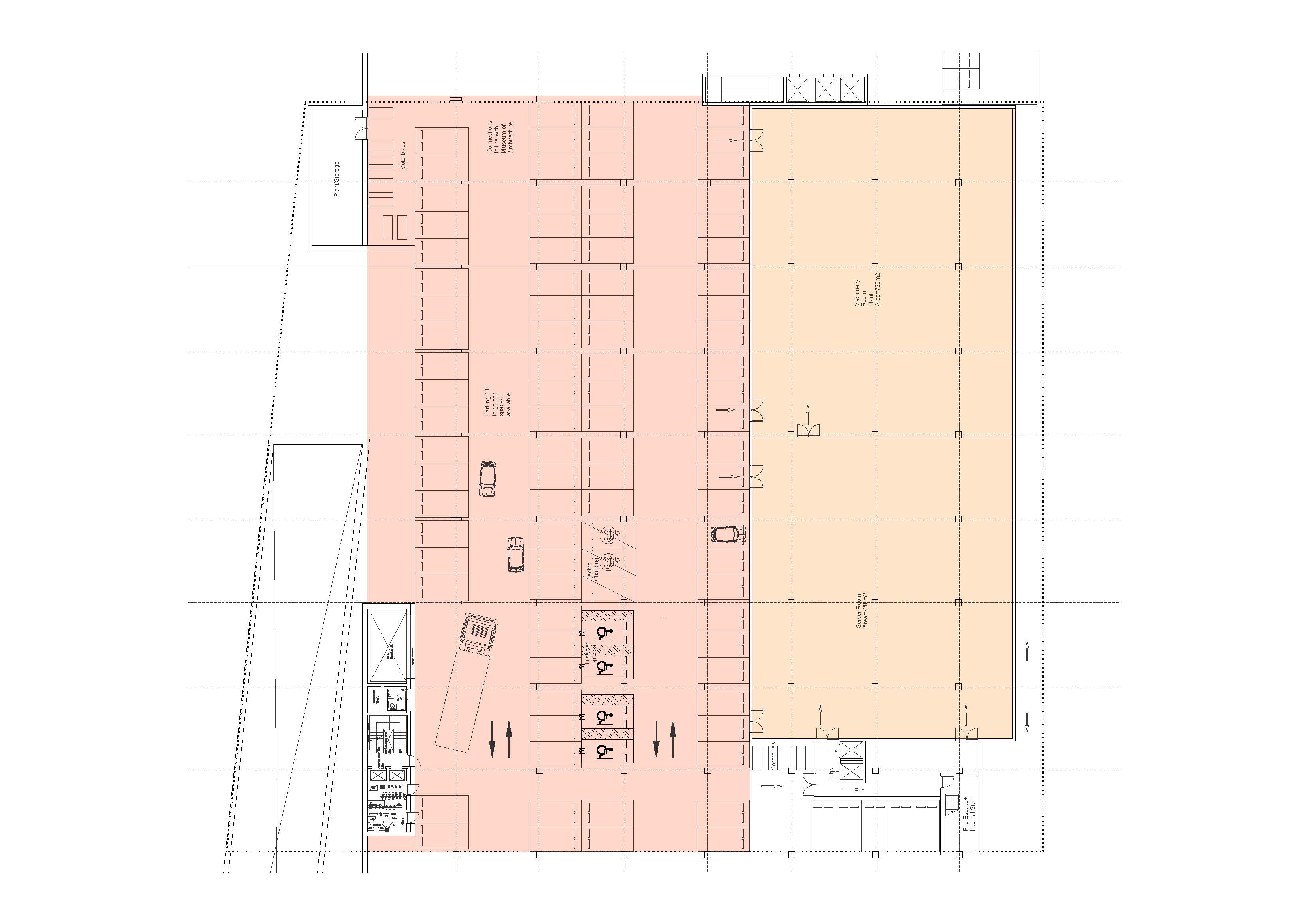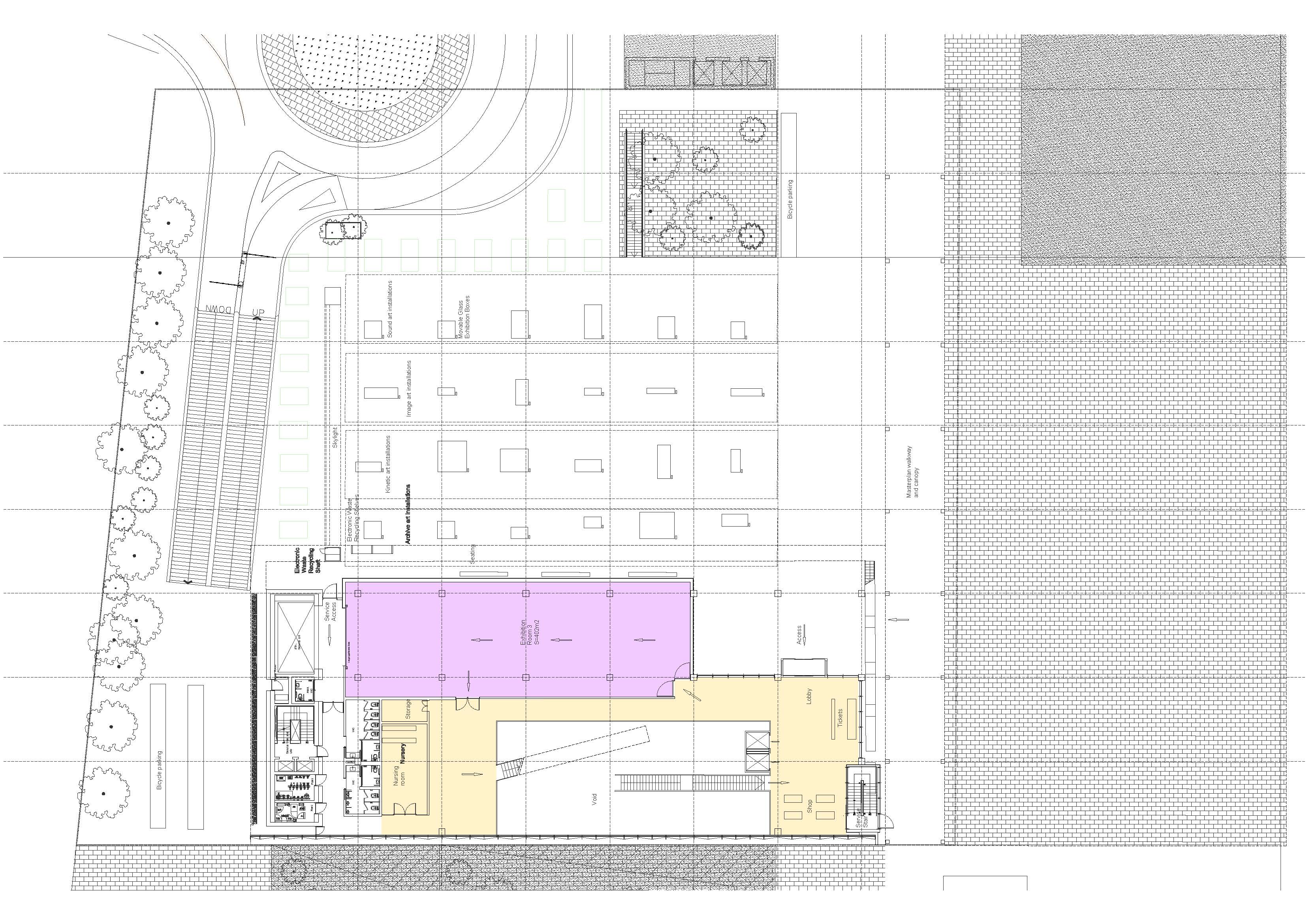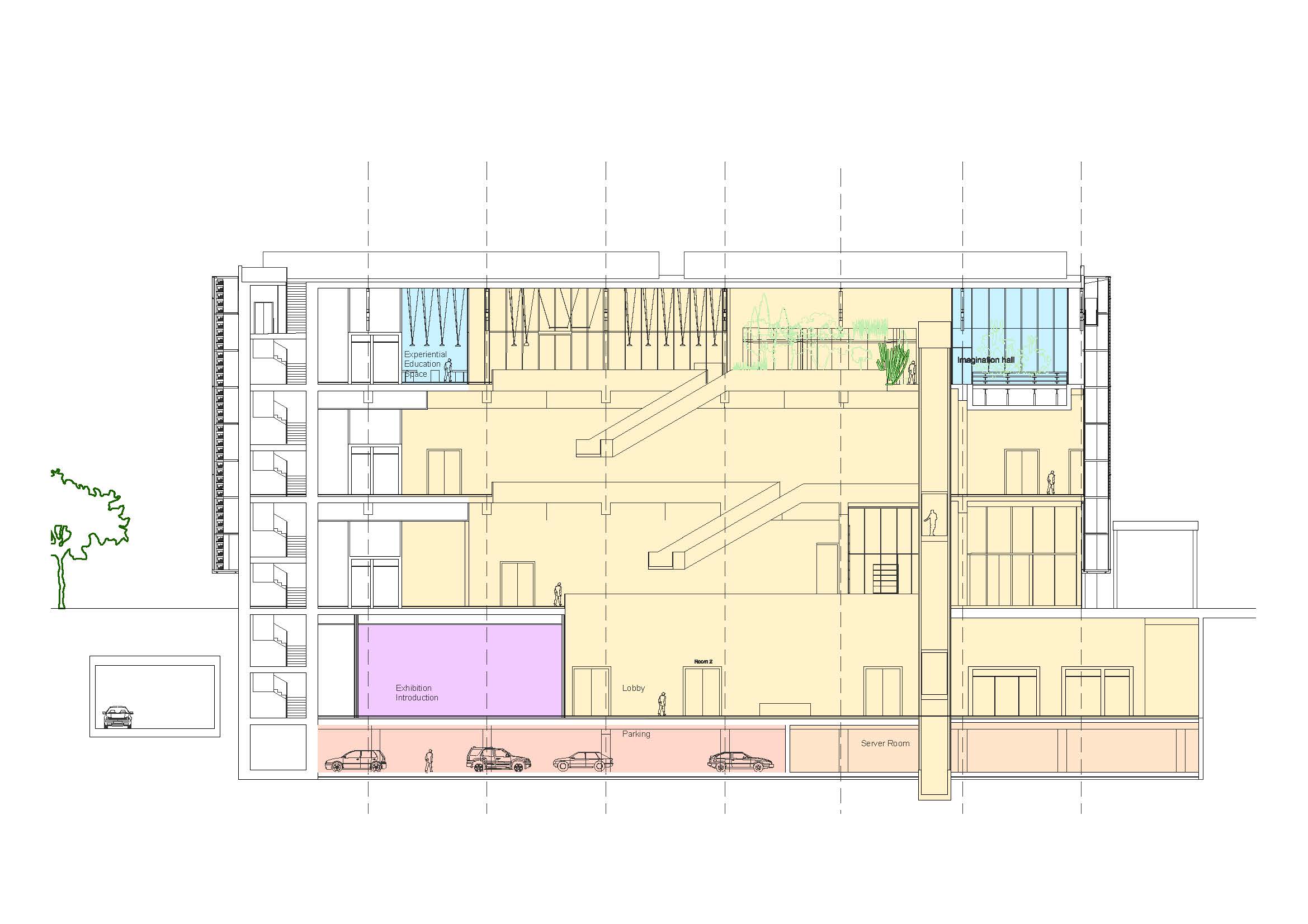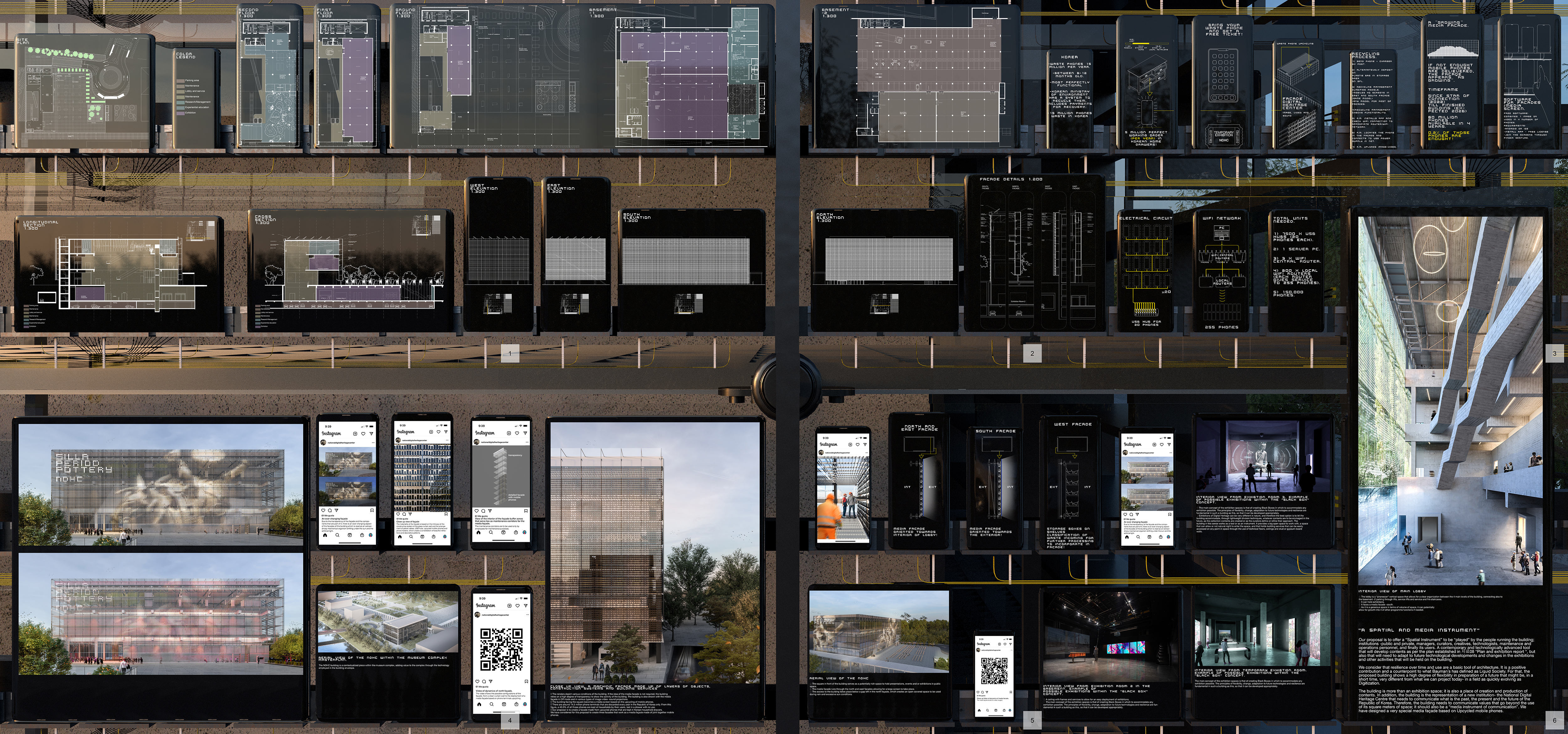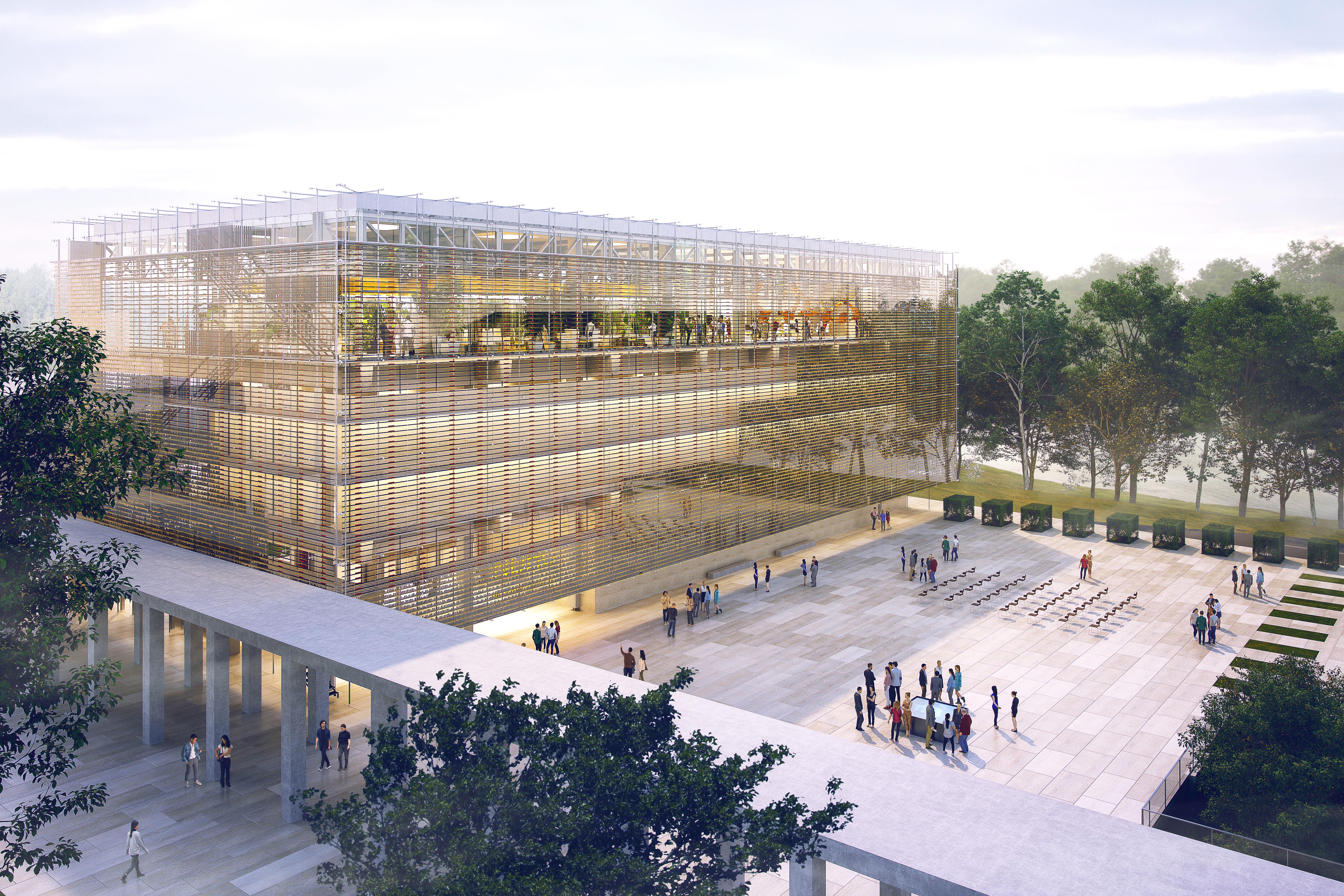
“A spatial and media instrument”
A project by GilBartolome Architects and HAHN International Architects, Mr. Hahn Jong Ruhl
Our proposal is to offer a “Spatial Instrument” to be “played” by the people running the building; institutions -public and private, managers, curators, creatives, technologists, maintenance and operations personnel, and finally its users. A contemporary and technologically advanced tool that will help the develop contents of the center.
The building is more than an exhibition space; it is also a place of creation and production of contents. In addition, the building is the re-presentation of a new institution- the National Digital Heritage Centre. Therefore the building needs to communicate values that go beyond the use of its square meters of space. It should also be a “media instrument of communication”. We have designed a very special media façade based on Upcycled mobile phones.
Exhibitions of Digital Heritage can be very different in nature, and therefore the best option is to let the building accommodate, through lightweight division techniques, whatever contents are to be envisaged in the future, as the collection contents are created or as the curators define or refine their approach. The building will provide a big open space to work with, a space that can allow or not natural light to enter the space, and that holds building services that can be easily accessed on any point in space.
Circulation in the building between exhibitions takes place within the Lobby, organized vertically in four floors. The space of the lobby is a great open space that can also hold special exhibitions, whether hanged in its vertical void, or on each of the floors within the areas of the circulation. In addition, there is a large screen looking towards the open lobby -the south façade, which can deliver contents of a varying nature according to the needs or opportunities that will arise.
The idea of having creative people doing work in the centre is of great transcendence to the building. There will be mutually beneficial synergies between creators, managers, curators, technicians, and visitors. Ultimately, the building will feel alive, and thrive in activity and excitement. To get this working, and allowing the possibility to the public of “visiting creative spaces”, we have worked with the concept of the building “as a tool of creation and a showcase of the activity that will take place in the building itself”. The work developed in creative studios and in makerspaces will be available to be visited. These spaces are connected to the lobby- which acts as a “panopticon”. They can potentially be freely accessible. In addition, they must also be comfortable spaces and well equipped, as they are going to hold people spending large amounts of time.
The ability in recent years to develop large-scale media screens on the size of building facades has exponentially grown so that it is possible today to blur the boundaries between the physical and the virtual through image, video and sound devices. This is certainly a powerful tool, but we wanted to specifically connect an idea of a media façade to the specific nature of the building, that of a Digital Heritage Center. We have achieved this through the development of a media façade that is in itself a piece of Digital Heritage. A media façade built with upcycled mobile phones.
Mobile phones are probably the most important sign of our era. Their universal spread in the world today is truly revolutionary in many ways. We think that our era could be defined as the era of The Mobile Phone. Mobile phones are also one of the most important assets of Korea, so it will help to communicate properly the “National” character of the NDHC.
The materiality of the façade is based on the intricacy of the constructive system of the glass curtain wall and the arrangement of yellow cables, USB hubs, upcycled mobile phones and phone holders, which create a constellation of beautiful reflections and decorative patterns.
Electronic waste is a serious problem. A lot of it ends up in landfills contaminating the soil, or stored at homes by citizens that do not really know what to do. Several plans and ideas have been tried, including an obligation to manufacturers and operators to manage that waste in connection to the sales of new phone terminals. Our proposal is to create a façade made from upcycled phones that are kept in Korean household drawers. The idea also is that citizens will hand in their phones personally, or via post and get a free ticket to visit exhibitions of the Design Centre. This has a multifaceted purpose: first, phones are upcycled, avoiding electronic waste production. Second, the media screen becomes financially more feasible. Third, a national campaign on TV or elsewhere, asking for the delivery of phones, will create a great awareness of the new Museum Complex and the NDHC in particular. Fourth, people connect with the building emotionally, and gets to know it through the promotion of exhibitions. Finally, each phone could have a tag associated to the owner that has donated it, and also create a Hall of Fame plaque to commemorate their contribution.
GilBartolome Architects (Architects Pablo Gil and Jaime Bartolome) and local architects Hahn International Architects (Architect Jong Ruhl Hahn)
Collaborators: Alvaro González Serrano
Credits:
GilBartolome Architects (Architects Pablo Gil and Jaime Bartolome) and local architects Hahn International Architects (Architect Jong Ruhl Hahn)
Collaborators: Alvaro González Serrano
